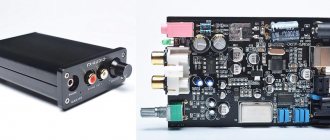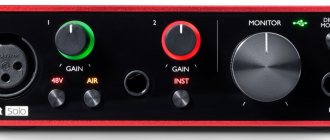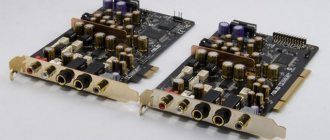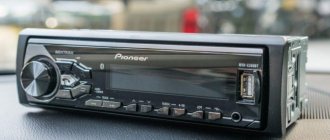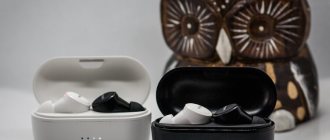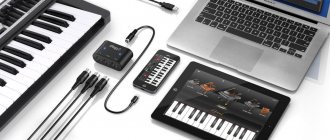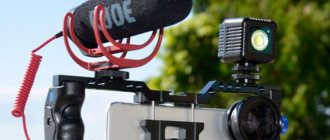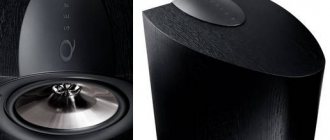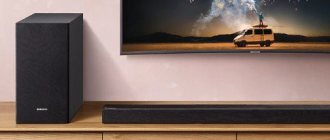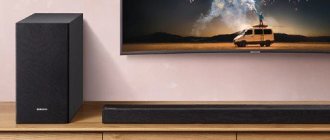When moving from a desktop computer to a laptop, the list of sound interfaces at a budget price with high-quality hardware is seriously narrowed. If you can connect an interface to a desktop computer via PCI, PCIe, USB or FW (as well as via SPDIF to the motherboard, with not always adequate quality), then laptops in most cases are limited only to USB and less often FW. The main options are either external sound cards with a USB interface, or a combination of USB-SPDIF
device and the external DAC connected to it.
The main difference between an external sound card and an external DAC is quite simple, an external DAC can work without being connected to a computer, while a sound card cannot work without a computer. Cost of USB-SPDIF
ranges from $100 to $200, which makes the combination quite expensive at first glance.
On the other hand, some USB-SPDIF
converters have 192 kHz and ASIO support, which can be very useful.
In this review we will take a superficial look at a number of inexpensive USB sound cards and some external DACs. All cards and DACs are selected based on the following criteria: the top models of DAC chips are used as the DAC chip. Of course, we must be aware that it is not only the DAC chip that is responsible for the sound quality, but also its implementation, which includes wiring and circuit solutions. This review provides introductory information on which sound cards and DACs it is advisable to pay attention to first, and also reveals some features of the products that should be avoided.
Most sound cards and DACs are available on the Russian market, and their prices start from $100-$200 and not higher than $500-$600.
The realities of the current day are such that external solutions are twice as expensive as internal ones when using similar components, while the final quality is comparable.
The microcircuits that in this review were classified as top-end (all have a dynamic range above 120 dB).
CS4398
Cards available include E-MU1212m, E-MU1616m, X-Fi Elite Pro, Xonar DX and Xonar D1.
AK4396
ESI/Prodigy HD2, Razer Barracuda, Auzentech X-Fi Prelude 7.1, AUZEN X-Fi Forte 7.1
WM8740
Not used in widely known maps
WM8741
Not used in widely known maps
WM8742
Not used in widely known maps
PCM1792
Xonar Essence ST, Xonar Essence STX
PCM1794
Sound Blaster X-Fi Titanium HD
TI PCM1795
Not used in widely known maps
PCM1796
Xonar D2/PM, Xonar D2X, Xonar HDAV1.3, Xonar HDAV1.3 Deluxe, Xonar Xense, ROG Xonar Phoebus
PCM1798
Not used in widely known maps
Once again I would like to emphasize that the devices listed below are what you should pay attention to first, but this does not mean that you should stop your choice there. For marketing purposes, a high-quality DAC chip
, but the wiring may turn out to be so bad that another device, on a simpler chip, but with a more successful wiring, may sound much better.
However, it should be noted that we are now paying attention to budget options, not expensive ones, and therefore you should not expect better sound from a device with a simpler DAC and similar wiring. In “expensive” devices, where attention is paid not so much to measurements as to subjective perception
, high results can be achieved with relatively simple components. But these are different categories of selection, and this is clearly not where you start searching for a source when moving from a desktop computer, especially if you are satisfied with the sound of cards such as the E-MU m series or Asus Xonar Essence STX.
Sound cards without the ability to work as an external DAC
E-MU 0204 USB
A relatively inexpensive card for professional use, it has on board separate outputs for speakers and a headphone amplifier, each of which is serviced by Asahi Kasei Microdevices AK4396
.
This is one of the most affordable options on an AK and is also technically competent. According to the measurement results, there are no problems with either increased distortion or jitter. Separately, I would like to note that in the spectrum of harmonic distortions there are practically no higher-order harmonics. Additional advantages include ASIO
(allowing you to bypass the Windows mixer). One of the disadvantages from the position of novice audiophiles is that the op-amps are not removable and therefore modding without soldering is impossible. Power is supplied from USB.
| Creative E-MU 0204 USB | |
| DAC | AK4396 |
| Replaceable op-amps | No |
| Availability of ASIO | Yes |
| USB support 24 bit | Yes |
| USB support 96 kHz | Yes |
| USB support 192 kHz | Yes |
| SPDIF digital input (coaxial or optical) | No |
| Price | $175 |
Detailed review of E-MU 0204 USB RAA Report:
Test report of the built-in amplifier E-MU 0204 USB in the measurement database
Creative SoundBlaster X-Fi HD
This product received low popularity thanks to the valiant advertisers from Creative, who, instead of announcing the circuitry used at the time of the card's release, traditionally went the opposite way, citing relatively low measured parameters in the form of 114 dB for the signal-to-noise parameter. This made it clear to most that the card had a mid-level DAC built into it and that the card was not a competitor to the then current professional E-MU0404, but was, at best, a competitor to the E-MU0202 and other mid-range cards from M-Audio, etc. When the hype regarding the release of HD series cards died down and was practically forgotten about, of course the filling became known in the form of
AK4396
DAC , but the train had already left and interest in it is still moderate. It would be more helpful if the manufacturer in this situation focused on the DAC model rather than on the characteristics.
And the advantage is worth noting the presence of a separate contact for grounding, which can help get rid of ground loops. Power is supplied from USB.
The cost of about $100 and the presence of a digital output gives reason to consider the Creative SoundBlaster X-Fi HD not just as a sound card with a good analog output, but also as a USB-SPDIF converter
.
| Creative SoundBlaster X-Fi HD | |
| DAC | AK4396 |
| Replaceable op-amps | No |
| Availability of ASIO | No |
| USB support 24 bit | Yes |
| USB support 96 kHz | Yes |
| USB support 192 kHz | No |
| SPDIF digital input (coaxial or optical) | Yes |
| Price | $100 |
Asus Xonar U7
New for 2013 on the CS4398 with 7.1 multi-channel output and all the software additions in the form of Xear and Dolby included with the internal cards. The digital input is USB only, there is a combined digital output of SPDIF (RCA) and miniTOSLINK. The headphone output is separate. The volume control wheel is non-stop, synchronized with the driver control panel. A detailed review of the new product is expected in the near future. The cost is not yet known, but there is information that the device will be in the lower price segment.
| ASUS U7 | |
| DAC | CS4398 |
| Replaceable op-amps | No |
| Availability of ASIO | Yes |
| USB support 24 bit | Yes |
| USB support 96 kHz | Yes |
| USB support 192 kHz | Yes |
| SPDIF digital input (coaxial or optical) | No |
| Price | $100-150 |
iBasso D-Zero
The iBasso D-Zero is based on the Wolfson WM8740
and is a miniature
USB DAC
and portable headphone amplifier (powered by
an AD8656 op amp
). Via USB, support is limited to 16-bit and 48 kHz via TI PCM2706 (by the way, 44.1 is supported in fair mode, without oversampling). D-Zero is relatively inexpensive and is a good option for portable use with a tablet or laptop while traveling. For stationary use, it is worth considering if you need to limit yourself to a minimum budget or support for high-resolution formats is not important. Power supply is possible from both USB and battery.
| iBasso D-Zero | |
| DAC | WM8740 |
| Replaceable op-amps | No |
| Availability of ASIO | No |
| USB support 24 bit | No |
| USB support 96 kHz | No |
| USB support 192 kHz | No |
| SPDIF digital input (coaxial or optical) | No |
| Price | $150 |
RAA Report:
Test report of the built-in iBasso D-Zero amplifier in the measurement database
iBasso D2+ Boa
This D2+ Boa external portable amplifier is functionally similar to the D-Zero, uses the Wolfson WM8740
, USB communication via TI PCM2706. Format support is limited to 16 bit and 48 kHz (44.1 without oversampling). A built-in battery is used for autonomous power supply. The metal case is from the “non-killable” category. D-Zero was released after D2+ Boa and is sort of an updated budget version.
| iBasso D2+ Boa | |
| DAC | WM8740 |
| Replaceable op-amps | No |
| Availability of ASIO | No |
| USB support 24 bit | No |
| USB support 96 kHz | No |
| USB support 192 kHz | No |
| SPDIF digital input (coaxial or optical) | No |
| Price | $220 |
RAA Report:
Test report of the built-in amplifier iBasso D2+ Boa in the measurement database
iBasso D4 Mamba
D4 Mamba uses two WM8740
according to the dual mono circuit. USB communication via TI PCM2706. Format support is limited to 16 bit and 48 kHz (44.1 without oversampling). It uses the crown as an electric battery. Due to schematic features, when connecting via USB, it is necessary to set the signal level 7 dB lower from 0 dBFS. Thus, in this model the advantages of dual mono are neutralized. Overall, the design is not bad as a portable amplifier, but as a DAC it could be much better. The set comes with two cases of different colors. The op-amps in the amplifier path are located in the cribs.
| iBasso D4 Mamba | |
| DAC | 2*WM8740 |
| Replaceable op-amps | yes (amplifier path) |
| Availability of ASIO | No |
| USB support 24 bit | No |
| USB support 96 kHz | No |
| USB support 192 kHz | No |
| SPDIF digital input (coaxial or optical) | No |
| Price | $250 |
RAA Report:
Test report of the built-in amplifier D4 Mamba in the measurement database
iBasso D6 Fer-de-Lance
iBasso D6 uses dual mono design on WM8740s
and supports high-resolution formats via USB via TI
TAS1020B
up to 24 Bit and 96 kHz. There are 4 replaceable op-amps in the amplifier path. Positioned as a fairly powerful portable headphone amplifier.
| iBasso D6 Fer-de-Lance | |
| DAC | 2*WM8740 |
| Replaceable op-amps | yes (amplifier path) |
| Availability of ASIO | No |
| USB support 24 bit | Yes |
| USB support 96 kHz | Yes |
| USB support 192 kHz | No |
| SPDIF digital input (coaxial or optical) | No |
| Price | $310 |
iBasso D7 Sidewinder
iBasso D7 supports 24-bit and 192 kHz via USB, and in addition to mini-jack connectors, it has RCA line outputs for analog and a digital coaxial output. Digital output supports 192 kHz. The analog path is based on WM8740
.
| iBasso D7 Sidewinder | |
| DAC | WM8740 |
| Replaceable op-amps | yes (amplifier path) |
| Availability of ASIO | No |
| USB support 24 bit | Yes |
| USB support 96 kHz | Yes |
| USB support 192 kHz | Yes |
| SPDIF digital input (coaxial or optical) | No |
| Price | $220 |
Firestone Audio ILTW
ILTW is based on Wolfson WM8740
.
TENOR TE8802
with support for 24 bits and 192 kHz is used as a USB receiver In addition to the USB input, there is an I2S digital input. Uses external 24 volt power supply.
| Firestone Audio ILTW | |
| DAC | WM8740 |
| Replaceable op-amps | No |
| Availability of ASIO | No |
| USB support 24 bit | Yes |
| USB support 96 kHz | Yes |
| USB support 192 kHz | Yes |
| SPDIF digital input (coaxial or optical) | No |
| Price | $450 |
Sound
The following headphones were used to listen to the device: iBasso IT04, Meze 99 Classics, Audio Zenith PMx2, Noble Kaiser Encore, Campfire Audio Andromeda, Unique Melody Mason V3, HUM Pristine and others.
If we talk about the sound “in general”, Hidizs chose a slightly softened presentation, which is often characterized as “musical”, but without excessive softness that hides details.
Low frequencies are slightly shifted towards weightiness, but very moderately; resolution and texture reproduction are practically not affected. Of course, this is not the super-fast technical bass of neutral DACs, but it is not the muddy blur that for some reason is often passed off as “multi-bit sound”. The depth of the bass is also quite good, although not prohibitive. The bass conveys rumbles, rumbles and blows well.
Mid frequencies are also presented in approximately the same vein. The DAC does not try to pull out the smallest details and focus on micro-contrast, but almost all the nuances of the recording, from emotions to the features of the room, are conveyed reliably. The imagined stage is slightly above average in depth and width with excellent separation of shots and instruments. Despite the slight bias in the midrange towards warmth, the character of instruments and vocals is conveyed reliably.
But what made me fall in love with this DAC is the high-frequency range. I don’t know whose merit this is – the Hidizs developers or the ESS engineers, but the high frequencies here sound not only high quality, but also “expensive”, with all the necessary overtones, attenuation, separation and everything that usually distinguishes top sources. Of course, I won’t even talk about purely technical characteristics like speed and resolution - everything is just fine on them.
And, of course, some comparisons. I am still not a fan of comparing different types of devices with each other, so only other DACs will participate in the comparison.
FiiO Q5 Putting aside the non-sound differences, the FiiO DAC is better in resolution, but sounds colder and more neutral. With some headphones and recordings this can be both a plus and a minus.
iFi xDSD Comparing pure sound, xDSD gets the win in the bass and midrange, as it plays just as musically, but a little more realistically, but the highs clearly remain with Hidizs.
Centrance BlueDAC The situation is about the same as the Q5, but with even better control of all frequencies, largely due to the increased power.
External DACs without USB input
These devices cannot be connected directly to the laptop and you must use a USB-SPDIF converter. Today the following converters are optimal:
Optical output
- ESI/Audiotrak Dr. DAC nano (24 bit, 96 kHz) – $130 – detailed review >>
- Creative SoundBlaster X-Fi HD (24 bit, 96 kHz) - $100
Coaxial output
- M2TECH HiFace RCA (24 bit, 192 kHz, ASIO) - $200
- Firestone Audio Red Key (24 bit, 96 kHz) - $130
SM PRO AUDIO ADDA
Curious converter for CS4398
. Today it has already been discontinued, but it is available in abundance on the Ukrainian market. The cost is relatively low, it makes sense to pay attention to it.
| SM PRO AUDIO ADDA | |
| DAC | CS4398 |
| Replaceable op-amps | No |
| USB support 24 bit | Yes |
| USB support 96 kHz | Yes |
| USB support 192 kHz | Yes |
| Digital input SPDIF coaxial | Yes |
| Digital input SPDIF optical | Yes |
| Price | $450 |
Packaging and delivery
This time, no stunning ideas await us in the packaging, ordinary textured black cardboard, seen many times already. The box contains the DAC itself, instructions with a warranty card, a long USB-A cable, a short but stylish MicroUSB to MicroUSB cable and a MicroUSB to USB-C cable.
In general, the developers tried to maximize the connectivity options of their brainchild.
External DACs with USB (with the ability to work as a sound card)
These devices can operate either as a USB sound card or as a separate SPDIF device not connected to the computer. Many external USB DACs are made for show with support for only 16 bits and 48 kHz, and for them you will probably have to buy a separate USB-SPDIF converter, which should be taken into account in the final cost. Recommended budget USB-SPDIF converters:
Optical output
- ESI/Audiotrak Dr. DAC nano (24 bit, 96 kHz) – $130 – detailed review >>
- Creative SoundBlaster X-Fi HD (24 bit, 96 kHz) - $100
Coaxial output
- M2TECH HiFace RCA (24 bit, 192 kHz, ASIO) - $200
- Firestone Audio Red Key (24 bit, 96 kHz) - $130
ASUS Essence One/Plus
New for 2012. The main advantages are the use of PCM1795
in a dual mono circuit and the ability to replace
11 op-amps
. Today this can be considered a record for modding using replaceable op-amps. As testing has shown, the USB input is subject to jitter and to realize the potential of the Asus Essense One, it is advisable to use an external USB converter. Digital inputs include both coaxial and optical inputs.
| ASUS Essence One/Plus | |
| DAC | 2*PCM1795 |
| Replaceable op-amps | Yes |
| USB support 24 bit | Yes |
| USB support 96 kHz | Yes |
| USB support 192 kHz | Yes |
| Availability of ASIO | Yes |
| Digital input SPDIF coaxial | Yes |
| Digital input SPDIF optical | Yes |
| Price | $540 |
RAA Report:
ASUS Essence One/Plus built-in amplifier testing report in the measurement database
Asus Xonar STU
External version of internal ST and STX cards on PCM1792A
with replaceable op-amps and amplifier on
TPA6120A2
. The DAC has support for ASIO and 192 kHz. Detailed review.
| Creative E-MU 0204 USB | |
| DAC | PCM1792 |
| Replaceable op-amps | Yes |
| Availability of ASIO | Yes |
| USB support 24 bit | Yes |
| USB support 96 kHz | Yes |
| USB support 192 kHz | Yes |
| SPDIF digital input (coaxial or optical) | Yes |
| Price | $400 |
E-MU 0404 USB
This card predates the E-MU0204 USB in 2006 and was one of the first budget priced products using the AK4396
. When compared to the E-MU 0204 USB, the main difference is the addition of digital inputs and outputs. The rest is practically the same. In terms of technical measurements, the E-MU 0204 USB shows a slightly better result. Power is supplied from an external power supply.
| Creative E-MU 0404 USB | |
| DAC | AK4396 |
| Replaceable op-amps | No |
| Availability of ASIO | Yes |
| USB support 24 bit | Yes |
| USB support 96 kHz | Yes |
| USB support 192 kHz | Yes |
| SPDIF digital input (coaxial or optical) | Yes |
| Price | $280 |
RAA Report:
Test report of the built-in amplifier E-MU 0404 USB in the measurement database
Musical Fidelity V-DAC
This DAC is available in different modifications, and one of the chips can be installed as a DAC: PCM1792
,
PCM 1794
or
PCM 1796
.
Of course, the version with 1792 or 1794 is the most desirable, but the buyer will find out what will be inside only after the purchase. This lottery is not very pleasant, but we have to admit that even with the PCM1796 the V-DAC is quite interesting. For USB in the first version, the TI2706 is responsible, with a limit of 16 bits and 48 kHz. The DAC is fed with a 192 kHz upsampler stream using the SRC4392
.
Digital inputs are of both types, coaxial and optical. V-DAC has external power supply. Today, the first version (in a black case) has been discontinued and a second version in a silver case is offered. According to the results of measurements of the first version on PCM 1792
, the output characteristics were not ideal (background noise, not the lowest distortion) and one can only hope that in the second version work has been done to correct the errors.
| Musical Fidelity V-DAC | |
| DAC | PCM1792, PCM 1794 or PCM 1796 |
| Replaceable op-amps | No |
| USB support 24 bit | No |
| USB support 96 kHz | No |
| USB support 192 kHz | No |
| Availability of ASIO | No |
| Digital input SPDIF coaxial | Yes |
| Digital input SPDIF optical | Yes |
| Price | $400 |
Musical Fidelity V-DAC II
This DAC is based on PCM 1796
. The second version of USB supports up to 24 bits and 96 kHz. The DAC is fed with a 192 kHz upsampler using a Burr Brown SRC4392. Digital inputs are of both types, coaxial and optical. The optical input supports up to 96 kHz and 24 bits, and the coaxial input supports up to 192 kHz and 24 bits. V-DAC II has external power supply.
The main difference from the first version is the updated circuit with a USB path with support for high-resolution formats.
| Musical Fidelity V-DAC II | |
| DAC | PCM1796 |
| Replaceable op-amps | No |
| USB support 24 bit | Yes |
| USB support 96 kHz | Yes |
| USB support 192 kHz | No |
| Availability of ASIO | No |
| Digital input SPDIF coaxial | Yes |
| Digital input SPDIF optical | Yes |
| Price | $400 |
iBasso D12 Anaconda
The D12 replaces the D10 Cobra and is an intermediate model between the D6 and DB1/DB2. Portable DAC based on WM8740
according to the dual mono circuit, has digital inputs, optical and coaxial. USB is implemented on PCM2906B with a corresponding limitation of 16 bits, 48 kHz. Op amps are replaceable in cribs, and a set of op amps is included in the kit for the user to find the most suitable sound.
| iBasso D12 Anaconda | |
| DAC | 2*WM8740 |
| Replaceable op-amps | Yes |
| USB support 24 bit | Yes |
| USB support 96 kHz | Yes |
| USB support 192 kHz | No |
| Availability of ASIO | No |
| Digital input SPDIF coaxial | Yes |
| Digital input SPDIF optical | Yes |
| Price | $350 |
RAA Report:
Test report of the amplifier built into iBasso D12 Anaconda in the measurement database
iBasso DB1 Boomslang
A fairly mature version of a portable DAC, the technical express test showed high performance at the level of stationary, technically well-made equipment. The PCM2906B is responsible for USB with a limit of 16 bits and 48 kHz. Digital inputs are provided by the CS8416. Because express analysis was done a year ago, it is known for sure that there was support for 24 bits, but there is no data left regarding support for 192 kHz, and the information is not indicated in official sources. The digital-to-analog converter is based on WM8740
. The analog output is made in the form of a special balanced connector.
Unfortunately, at the moment the iBasso DB1 Boomslang is sold only in a set with the PB1 amplifier (in our country by the official distributor) and the final price is doubled.
| iBasso DB1 Boomslang | |
| DAC | WM8740 |
| Replaceable op-amps | No |
| USB support 24 bit | No |
| USB support 96 kHz | No |
| USB support 192 kHz | No |
| Availability of ASIO | No |
| Digital input SPDIF coaxial | Yes |
| Digital input SPDIF optical | Yes |
| Price | $250/$500 |
iBasso DB2 Boomslang2
DB2, unlike DB1, uses two WM8740
in mono modes and USB supports 24 bit and 96 kHz. In addition to USB, there is a coaxial and optical input. Analog outputs are available in two versions: unbalanced on a minijack and balanced in a special connector. Thanks to USB charging, it can work autonomously. TAS1020B is responsible for communication with USB, and CS8416 is responsible for servicing digital inputs.
Among compact portable DACs, this is perhaps one of the possible leaders on the market.
| iBasso DB2 Boomslang2 | |
| DAC | 2*WM8740 |
| Replaceable op-amps | No |
| USB support 24 bit | Yes |
| USB support 96 kHz | Yes |
| USB support 192 kHz | No |
| Availability of ASIO | No |
| Digital input SPDIF coaxial | Yes |
| Digital input SPDIF optical | Yes |
| Price | $380/$760 |
Audiotrak Dr.Dac2 DX
It is rarely found on sale, but is one of the popular solutions. Today the DX version is sold. Based on PCM1798
, at the same time, the predecessor showed very high technical characteristics and sounded at the level of the E-MU1616m.
USB supports formats up to 24 bit and 96 kHz. Digital inputs are available in optical and coaxial versions with support for up to 24 bits and 192 kHz. The digital output is made in a coaxial version with support for 24 bits and 96 kHz. in the DAC
and headphone amplifier paths.
| Audiotrak Dr.Dac2 DX | |
| DAC | PCM1798 |
| Replaceable op-amps | Yes |
| USB support 24 bit | Yes |
| USB support 96 kHz | Yes |
| USB support 192 kHz | No |
| Availability of ASIO | No |
| Digital input SPDIF coaxial | Yes |
| Digital input SPDIF optical | Yes |
| Price | $300 |
ESI Dr.Dac Prime
The DAC
is similar in functionality to Dr.Dac2 DX, it is made on
PCM1796
, there are replaceable op-amps. USB supports formats up to 24 bit and 96 kHz. From a technical point of view, the implementation is slightly inferior to Dr.Dac2. The main difference in price is due to the presence of a 192 kHz upsampler.
| ESI Dr.Dac Prime | |
| DAC | PCM1796 |
| Replaceable op-amps | Yes |
| USB support 24 bit | Yes |
| USB support 96 kHz | Yes |
| USB support 192 kHz | No |
| Availability of ASIO | Yes |
| Digital input SPDIF coaxial | Yes |
| Digital input SPDIF optical | Yes |
| Price | $480 |
Detailed review of ESI Dr.Dac Prime
RAA Report:
Test report of the built-in amplifier ESI Dr.Dac Prime in the measurement database
Lead Audio LA 100
LA 100 is similar to Prime - the same Burr Brown PCM 1796
, but without replaceable op-amps and with USB support up to 16 bits and 48 kHz. There are coaxial and optical inputs with support for 24 bit and 192 kHz. External power is used.
| Lead Audio LA 100 | |
| DAC | PCM1796 |
| Replaceable op-amps | No |
| USB support 24 bit | No |
| USB support 96 kHz | No |
| USB support 192 kHz | No |
| Availability of ASIO | No |
| Digital input SPDIF coaxial | Yes |
| Digital input SPDIF optical | Yes |
| Price | $420 |
Music Hall DAC 15.2
Music Hall DAC 15.2 is a direct competitor to Dr. Dac Prime - uses PCM 1796
, full range of inputs, USB, coaxial and optical. Digital outputs include coaxial. Analog outputs are made unbalanced on RCA. USB input supports up to 24 bit, 96 kHz.
| Music Hall DAC 15.2 | |
| DAC | PCM1796 |
| Replaceable op-amps | No |
| USB support 24 bit | Yes |
| USB support 96 kHz | Yes |
| USB support 192 kHz | No |
| Availability of ASIO | No |
| Digital input SPDIF coaxial | Yes |
| Digital input SPDIF optical | Yes |
| Price | $500 |
Cambridge Audio DAC Magic
Cambridge Audio DAC Magic is based on two Wolfson WM8740
according to the dual mono scheme, uses a special TMS 320VC5501 DSP upsampler filter. For digital inputs, there are two pairs of digital inputs consisting of optical and coaxial inputs. USB only supports 16 bit and 48 kHz. Other digital inputs up to 24 bit and 96 kHz. Analog outputs are made of both unbalanced RCA and balanced XLR.
| Cambridge Audio DAC Magic | |
| DAC | 2*WM8740 |
| Replaceable op-amps | No |
| USB support 24 bit | No |
| USB support 96 kHz | No |
| USB support 192 kHz | No |
| Availability of ASIO | No |
| Digital input SPDIF coaxial | Yes |
| Digital input SPDIF optical | Yes |
| Price | $550 |
Cambridge Audio DacMagic 100
Compact DAC based on Wolfson WM8742
, which is the oldest of all and among all the reviewed external
DACs
and sound cards, the DacMagic 100 is the only one that uses it. According to the specifications, all inputs support 24 bit and 192 kHz, including USB, two coaxial and one optical. ASIO support declared. There is a switchable grounding isolation.
| Cambridge Audio DAC Magic | |
| DAC | WM8742 |
| Replaceable op-amps | No |
| USB support 24 bit | Yes |
| USB support 96 kHz | Yes |
| USB support 192 kHz | Yes |
| Availability of ASIO | Yes |
| Digital input SPDIF coaxial | Yes |
| Digital input SPDIF optical | Yes |
| Price | $460 |
Design and management
The appearance of the Hidizs gadget is very successful, it very much looks like it was assembled on the same assembly line as the Hiby R6; common elements are visible in the design. The body is made of aluminum with glass overlays on the front and back panels. A little impractical, but it looks very impressive, I hope that Hidizs will make a player with the same design in the future. The developers clearly understood that one of the main criteria for a portable DAC is size, so they made it quite thin, which had a positive effect on the ability to “sandwich” it with a digital source. The dimensions of the DH1000 are generally very convenient, so ergonomics do not raise any questions.
Inputs and outputs were placed on the bottom side of the device. One MicroUSB is used for charging, the second is for connecting smartphones. I note that the idea of separating the inputs is also good from the point of view of filtering noise, and allows you to save the phone from rapid discharge if the DAC decides to charge it. There is also a full-size USB-A, it is used to turn on iOS devices, you can also connect an Android phone here, but since in this case the source will be charged from the DAC, there is not much point in this.
On the top side there is a power button, an LED indicator and both outputs: balanced and normal. The volume control buttons are located on the side; they have a good click and are therefore pleasant to the touch.
The operating time is not prohibitive, from the normal output it is a little less than 9 hours, from the balanced output it is also a little less than 8, but in general, this is comparable to other devices of a similar price category.
conclusions
Among the recommendations, I would like to note ultra-cheap solutions for stationary use in the form of the Creative SoundBlaster X-Fi HD for $100 and wide availability, and for tablets - iBasso D-Zero. Of the more expensive solutions around $200, the most interesting options are the E-MU 0204 USB and iBasso D7.
An interesting observation can be made - despite the prices, among external DACs, USB support with 24 bits and 96 kHz is quite rare
.
There are plans to conduct a large-scale test of budget external solutions against built-in hit sound cards and DACs of the upper price segment. In the comments to the material, you can leave your wishes on the models that you would like to see in a comparative test, as well as those models that can be added to the current review.
Author:
28.08.2012
Found a typo in the text?
Select and press
Ctrl+Enter
. This does not require registration. Thank you.
Compatibility
On the one hand, 150 milliwatts of power is not super much. On the other hand, this is more than enough for most portable headphones and not the tightest full-size ones, so there is no shortage of power here. The DAC has a low noise level, so background will not be a problem, with the possible exception of hypersensitive models.
Stylistically, this combine is universal, but its strengths are best revealed in genres that require naturalness and naturalness: classical, jazz, vocals, instrumental and chamber music. The device is quite tolerant of recording quality, about 6 points out of 10.
By tradition, several tracks as an example
Marcus Miller - Someone To Love Let's play trump cards right away. Excellent, very realistic recording of piano, guitar, light percussion, spectacular vocals - exactly what allows the strengths of the hero of today's review to be revealed.
Hurts — Wonderful Life And another example of when the combination of a little softness with spectacular highs makes itself felt to the fullest. Despite the general “pop” of the recording, its background design is quite multifaceted, and the DH1000 emphasizes it very nicely.
The Cure — Friday I'm In Love Well, some classics of the genre, perfect for our DAC. Hidizs' creation slightly brightens up the slight shortcomings of the recording, emphasizes the strengths and generally acts like a professional makeover on The Cure.
